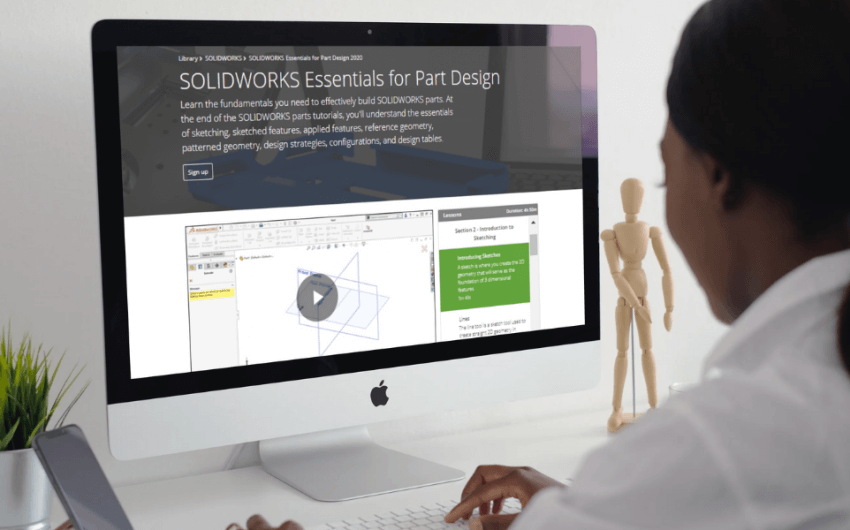How Employers Can Attract Fresh Engineering and Production Talent to the Manufacturing Industry
All kinds of manufacturing jobs — from mechanical engineers to CNC machinists — are in high demand. But filling those open positions is proving to be a challenge.
If you’re in manufacturing, you’ve likely heard that the industry needs to fill 4.6 million jobs by 2028, a figure that encompasses skilled production roles such as CNC machinists and programmers as well as engineers, scientists, and researchers. However, 2.4 million of these jobs could go unfilled, and employers are already feeling the effects of this labor shortage. It now takes well over three months to fill any of these positions — a 30% increase from 2015.

Why is there a skilled labor shortage in manufacturing?
- The manufacturing workforce is aging across all sectors. About 25% of industrial engineers and 22% of mechanical engineers are over the age of 55. The outlook is even worse for skilled production. For example, 75% of tool and die makers are 45 or older, and only 2% are under the age of 35. Retiring employees will account for 2.69 million (i.e., the majority) of the 4.6 million jobs that need to be filled.
- The misconception that manufacturing isn’t a “cool” job. While older employees leave the industry, younger students and professionals hesitate to join. Uncertainty around outsourcing practices plus a perception that the industry isn’t “cool” are the main reasons for the lack of young people pursuing careers in manufacturing (although, we know those are just manufacturing myths). Only 30% of Americans say they would encourage their children to pursue a career in manufacturing. Meanwhile, Industry 4.0 is making manufacturing one of the most innovative (and viable) industries in which to pursue a career.
- Traditional education alone isn’t enough. For those who do decide to pursue an education in manufacturing, their schooling options aren’t always in line with employers’ expectations. The skills and concepts they learned in school become outdated and impractical quickly, but manufacturing requires updated, hands-on experience with complicated tools like design software, machinery, and other equipment.
What can employers in the manufacturing industry do to attract new, skilled talent?
While it might sound like a daunting task, there are actions manufacturing employers can take today to position themselves as an attractive opportunity for new engineering and production professionals.
Offer apprenticeships
In recent years, apprenticeship programs have resurged in popularity. The number of manufacturing apprenticeships has grown by 42% since 2013. Offering apprenticeships to manufacturing employees gives them the technical and practical experience they need in a hands-on setting. Apprenticeships bring in potential employees, and they foster higher engagement once they’re hired.
>> Looking to apply for a manufacturing apprenticeship? Click here for all you need to know!
Hire with flexibility and look for soft skills
With the rise of the gig economy and millennials’ tendency to switch roles every few years, a major source of potential labor can come from a more flexible approach to hiring. The manufacturing workforce of the future might not look like it has historically. Instead, it could mean more part-time work, contract arrangements, and people from more varied professional backgrounds.
This is why it’s important to hire for soft skills in manufacturing. Instead of looking for specific technical skills to fill a particular role, employers should look for skills such as logic troubleshooting, spatial visualization, critical thinking, and most importantly, a willingness to learn. Hire for these skills and then provide training on the job for those hard, technical skills.
The team at strategy& says, “Creative solutions to fill the talent gap include hiring people who are not necessarily prepared for a career in industrial equipment — indeed, who may have preferred a job in Silicon Valley or someplace attractive like that — but are technologically savvy and potentially a great asset for a manufacturer in transition.”
Adopt an online learning platform for on-the-job training
According to one survey, the one thing that millennials want most when starting a new job is sufficient training. This presents a huge opportunity for manufacturers that can offer on-the-job training. Adopting an online learning platform is a fast and effective way to offer technical training to employees of all skill levels. Whether used alone or as a supplemental tool in an apprenticeship program, an online learning platform can enable busy production and engineering teams to learn new skills quickly with minimal downtime and costs. In fact, online learning can cost 75% less than traditional classroom training.
Plus, modern, digital learning platforms can be more attractive (and effective) to younger workers than classroom training.
>> Need funding for on-the-job training programs? Employers can get funding through WIOA grants!
The skills manufacturing teams are learning online right now.

Source: SolidProfessor
This article is part of our #MFGDay19 series! We’re celebrating the manufacturing industry all month. Check out other articles from the series here:
- 3 Additive Manufacturing Design Factors You Need to Consider
- Why the Manufacturing Industry Needs to Close the Gender Gap in Order to Defeat the Skilled Labor Shortage
- 3 Transformative Manufacturing Innovations in Industry 4.0
- The Truth Behind Some of the Biggest Myths about Manufacturing Jobs
- Everything You Need to Know about Apprenticeship Programs (and Why You Might Want to Start Applying Now)
























